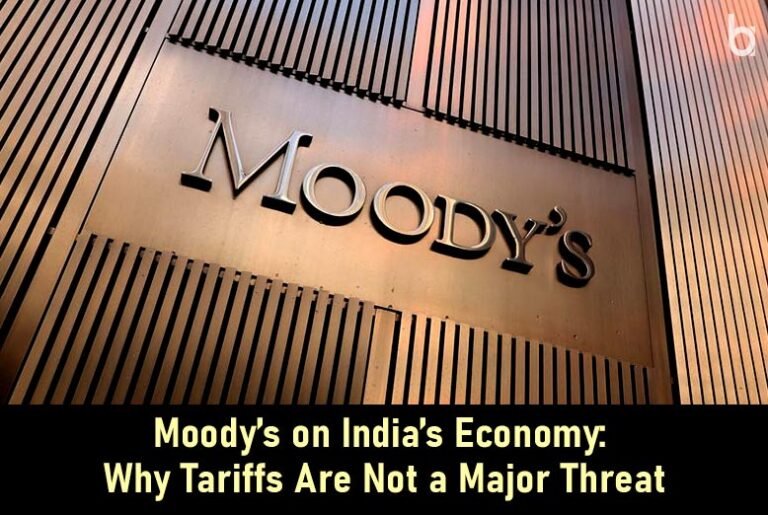Business APAC
May 21, 2025
As the world economy reels from escalating trade barriers and tariff wars, Moody’s has released a more optimistic outlook for India’s economy, stating it’s unlikely to suffer significant damage. The global ratings agency’s recent report argues that India’s structural strengths—particularly domestic consumption and trade diversification—will cushion the impact.
Moody’s assessment comes at a time when major global economies like the U.S. and China are tightening their trade policies. Yet, India seems positioned differently.
“India isn’t immune to global shocks, but it’s more insulated than most,” said Gene Fang, Associate Managing Director at Moody’s. “What sets India apart is the sheer scale of its internal market and the direction of its recent trade diplomacy.”
Resilient Consumption Hold Steady
One of the defining features of India’s current growth story is its domestic demand. Household consumption accounts for around 60% of India’s GDP—a figure that acts like an internal shock absorber during global downturns.
The government’s Q4 2024 data revealed a 7.1% increase in private consumption spending year-over-year, driven by housing, retail, and personal finance. According to Moody’s, this helps explain why India’s economy can absorb trade shocks better than export-heavy economies like South Korea or Taiwan.
Strategic Trade Partnerships Add Cushion
The recent report from Moody’s on India’s economy also highlights how India’s foreign trade strategy has matured. While traditional export destinations remain important, India has moved quickly to ink bilateral agreements across the Middle East, Europe, and Southeast Asia.
The India–UAE CEPA and ongoing discussions with the EU have broadened market access and reduced overdependence on any single region. This kind of portfolio approach to trade appears to be paying off.
Homegrown Manufacturing Reduces Import Pressures
Another trend working in India’s favor is its steady shift toward self-reliant manufacturing. Moody’s points to the Production-Linked Incentive (PLI) scheme as a central plank in reducing import dependency, especially in electronics and semiconductors.
Mobile phone exports surged by over 30% last year, and several global tech giants have expanded their local assembly operations.
Investor Sentiment Still Strong
Despite global volatility, Moody’s on India’s economy notes that investor confidence hasn’t wavered. India attracted more than $50 billion in net FDI in FY2024–25, according to the Reserve Bank of India.
Meanwhile, the Nifty 50 continues to perform strongly, even as Wall Street and the Hang Seng deal with more volatility. Much of this confidence stems from macroeconomic stability and policy predictability, which Moody’s credits as being key ingredients in India’s staying power.
“Investors see India as a reforming economy with political stability—something rare these days,” said Sangeeta Mehra, Director at Axis Capital. “If Moody’s sounds upbeat, it’s because the fundamentals support that tone.”
Conclusion: A Controlled Course Through Global Turbulence
While Moody’s acknowledges that no country is entirely immune to trade shocks, its view on India’s economy stands out for its optimism. A blend of consumption-driven growth, improved trade agility, and focused industrial policy seems to be working in India’s favor.
With GDP growth projected between 6.5% and 7% over the next few years, India may not just survive this wave of protectionism—it might grow right through it.
Also Read: India Set to Lead the World with Fastest-Ever Satcom Rollout



